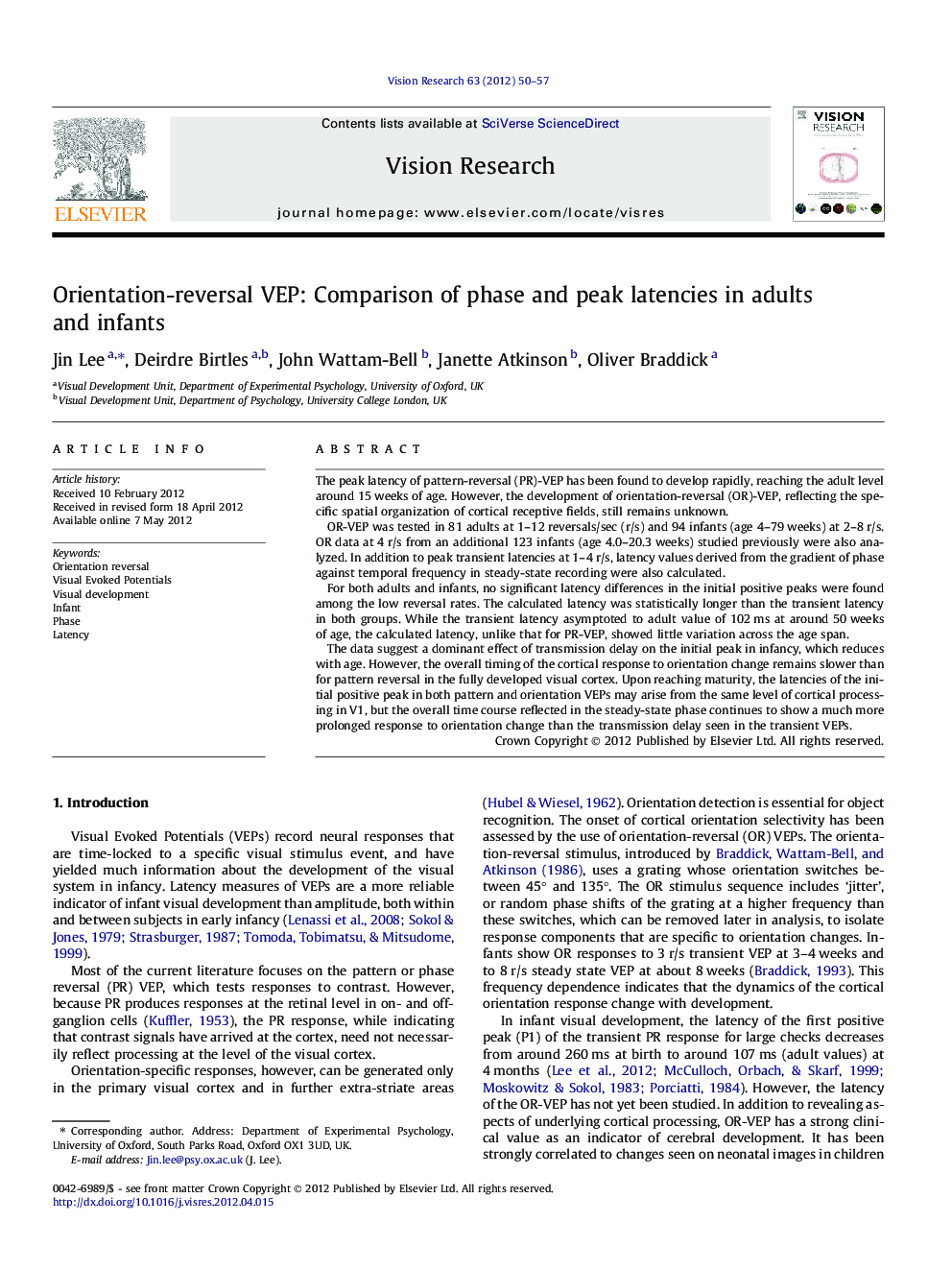| Article ID | Journal | Published Year | Pages | File Type |
|---|---|---|---|---|
| 4033994 | Vision Research | 2012 | 8 Pages |
The peak latency of pattern-reversal (PR)-VEP has been found to develop rapidly, reaching the adult level around 15 weeks of age. However, the development of orientation-reversal (OR)-VEP, reflecting the specific spatial organization of cortical receptive fields, still remains unknown.OR-VEP was tested in 81 adults at 1–12 reversals/sec (r/s) and 94 infants (age 4–79 weeks) at 2–8 r/s. OR data at 4 r/s from an additional 123 infants (age 4.0–20.3 weeks) studied previously were also analyzed. In addition to peak transient latencies at 1–4 r/s, latency values derived from the gradient of phase against temporal frequency in steady-state recording were also calculated.For both adults and infants, no significant latency differences in the initial positive peaks were found among the low reversal rates. The calculated latency was statistically longer than the transient latency in both groups. While the transient latency asymptoted to adult value of 102 ms at around 50 weeks of age, the calculated latency, unlike that for PR-VEP, showed little variation across the age span.The data suggest a dominant effect of transmission delay on the initial peak in infancy, which reduces with age. However, the overall timing of the cortical response to orientation change remains slower than for pattern reversal in the fully developed visual cortex. Upon reaching maturity, the latencies of the initial positive peak in both pattern and orientation VEPs may arise from the same level of cortical processing in V1, but the overall time course reflected in the steady-state phase continues to show a much more prolonged response to orientation change than the transmission delay seen in the transient VEPs.
► Calculated latency takes into account the entire VEP response. ► Phase-based calculated latency is effective for orientation reversal (OR)-VEP. ► Unlike phase reversal (PR), the calculated latency of OR is prolonged compared to the peak latency. ► Peak latency has similar developmental trend in PR and OR. ► Calculated latency of OR showed little change with age.
